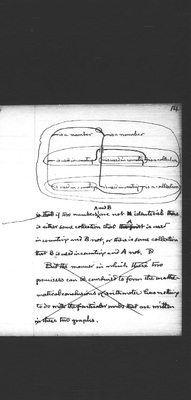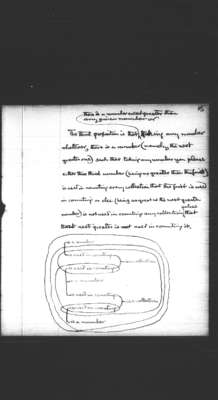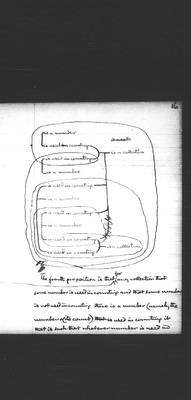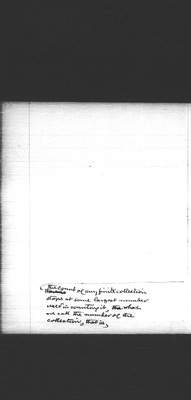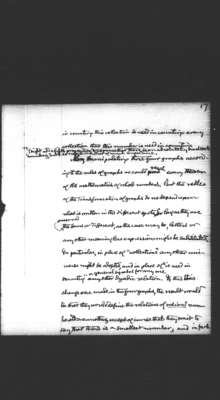Pages
16
14
[diagram]
is that if two numbers A and B are not identical there is either some collection that A is used in counting and B is not, or there is some collection that B is used in counting and A not.
But the manner in which these two premisses can be combined to form the mathematical conclusions of arithmetic has nothing to do with the particular words that are written in these two graphs.
17
15
The third proposition is that there is a number next greater than any given number or taking any number whatever, there is a number (namely, the next greater one) such that taking any number you please either this third number (being no greater than the first) is used in counting every collection that the first is used in counting or else (being as great as the next greater number) is not used in counting any collection unless that next greater is used in counting it.
[diagram]
20
17
in counting this collection is used in counting every collection that this number is used in counting. I might add a fifth proposition to express that there is an absolutely smallest number; but I do not think that of much importance.
By manipulating those four graphs according to the rules of graphs we could reach every theorem of the mathematics of whole numbers. But the rules of the transformation of graphs do not depend upon what is written in the different spots. So long as they are preserved the same or different, as the case may be, letters or any other meaningless expressions might be substituted. In particular, in place of “collections” any other universe might be adopted, and in place of “is used in counting” a general symbol for any one dyadic relation. If this change were made in the four graphs, the result would be that they would define the relations of ordinal numbers to one another, except of course that they omit to say that there is a smallest number; and in fact
